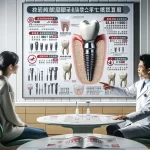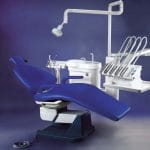For low-income adults, accessing affordable dental care can often feel like an uphill battle. Fortunately, Medicaid, the government health insurance program designed for those with limited incomes, offers a crucial pathway to obtaining essential oral health services. But what exactly does Medicaid cover when it comes to dental benefits for adults? The answer is complex, as coverage varies significantly from state to state.
The Landscape of Medicaid Dental Benefits
Medicaid serves as a vital safety net for low-income individuals, particularly in health services. While it mandates dental coverage for children, adult dental benefits are optional, leading to significant variability in coverage across states.
Coverage for Children vs. Adults
Children: Medicaid ensures comprehensive dental coverage for children, providing essential services such as preventive care, treatment of pain and infections, and restoration of teeth.
Adults: For adults, dental coverage is not mandated. As a result, fewer than half of the states offer comprehensive benefits. Many provide only limited services or emergency care, leaving millions without access to necessary preventive and restorative dental care.
Recent Improvements in Adult Dental Coverage
The landscape of adult dental benefits under Medicaid has seen significant improvements in recent years. As of 2023, 39 states and Washington D.C. offer some level of dental benefits beyond emergency services for adult enrollees. Key developments since 2020 include:
Expansion of Benefits: Between 2020 and 2022, many states significantly expanded adult dental benefits. This trend continued into 2023 with new implementations:
Hawaii reinstated adult dental benefits that had been eliminated in 2008.
Maryland and Tennessee expanded their benefit packages to cover a wider range of services.
Kentucky included fillings, crowns, implants, and dentures in its expanded coverage.
Michigan and New Hampshire added new benefits for all adult beneficiaries starting April 1, 2023.
Future Developments
Looking ahead to 2024, several states are expected to enhance their adult dental coverage further:
Connecticut will introduce periodontal coverage for adults with specific medical conditions starting January 1, 2024.
New York has reached a settlement that will expand coverage for root canals, crowns, dental implants, and replacement dentures to approximately five million beneficiaries.
Nebraska plans to remove the annual benefit cap on dental services and begin covering wisdom tooth extractions.
These changes underscore a growing recognition among policymakers of the importance of oral health in overall health outcomes for low-income adults.
Current Coverage Landscape
Despite these improvements, disparities persist. The current landscape reveals that:
Only nine states provide extensive dental benefits covering a wide range of procedures for all adult beneficiaries.
Many states continue to limit coverage based on specific beneficiary groups or types of services offered.
Approximately 20 states report varying coverage levels based on specific needs such as pregnancy or chronic health conditions.
Variability in Coverage by State
States exercise significant discretion in defining the scope of dental services covered under their Medicaid programs, resulting in considerable variability in coverage. This overview details the different categories of dental coverage across states, specific procedures commonly covered, and recent trends in Medicaid dental benefits.
Categories of Dental Coverage
Medicaid dental benefits for adults can be classified into four main categories:
No Coverage: Certain states, such as Alabama and Tennessee (prior to 2023), do not provide any dental coverage for general adult enrollees.
Emergency-Only Services: States like Florida and Mississippi restrict coverage to emergency dental services aimed at alleviating pain and infection.
Limited Services: States such as Texas and South Carolina offer a restricted set of services, covering fewer than 100 procedures. Annual spending caps are typically set at $1,000 or less per patient.
Extensive Coverage: An increasing number of states—including California, New York, and Washington—now offer a more comprehensive range of dental services for adult Medicaid recipients. This includes diagnostic, preventive, and major restorative procedures with annual limits often exceeding $1,000 per person.
As of 2023, nine states plus Washington D.C. provide extensive dental benefits through Medicaid, a notable increase from just three states in 2020. However, the majority still fall into the limited coverage category.
Specific Procedures Covered
The specific dental procedures available under Medicaid can vary significantly by state but generally include:
Exams and X-rays
Cleanings
Fillings
Extractions
Root canals
Crowns
Dentures
Periodontal (gum) treatment
To find out what benefits are available, Medicaid enrollees should consult their state Medicaid agency. Most agencies provide detailed information on adult dental coverage through their websites or member handbooks.
Recent Trends and Changes
Recent years have seen several states significantly expand their Medicaid dental benefits:
Connecticut has started covering certain periodontal services effective January 1, 2024.
Kansas is set to include dental exams and cleanings starting July 1, 2024.
Minnesota now provides dental benefits based on medical necessity to all Medicaid-enrolled adults as of January 1, 2024.
Nebraska eliminated its $750 annual cap on dental benefits effective January 1, 2024.
West Virginia increased its annual benefit maximum from $1,000 to $2,000 over two years starting July 1, 2024.
These expansions reflect a growing recognition of the importance of oral health and access to comprehensive dental care for low-income adults.
Specialized Benefits for High-Risk Populations in Medicaid Dental Coverage
Medicaid is a critical source of health services for low-income individuals, including essential dental care. However, the extent of dental coverage varies significantly by state. Specialized dental benefits targeting high-risk populations—such as pregnant individuals, elderly adults, disabled individuals, and those with chronic conditions—are increasingly recognized as vital for enhancing overall health outcomes.
Pregnant Individuals
All states provide some level of dental coverage for pregnant Medicaid recipients, acknowledging the strong connection between oral health and pregnancy outcomes. Research indicates that gum disease during pregnancy can lead to serious complications, including premature birth and low birth weight. As of 2022, many states have expanded their dental benefits for this group. For example, some states offer comprehensive dental care throughout pregnancy and extend coverage up to 12 months postpartum, while others restrict benefits to the duration of pregnancy and a limited postpartum period.
Elderly and Disabled Adults
Older adults and individuals with disabilities often face significant barriers to accessing necessary dental care, which can exacerbate existing health issues. In response, several states have expanded their dental benefits specifically for these populations. For instance, Kansas has implemented comprehensive dental coverage for all adults aged 65 and older and individuals with disabilities. This coverage includes essential services such as cleanings, fillings, dentures, and periodontal care, addressing the urgent need for improved oral health among these vulnerable groups.
Adults with Chronic Conditions
Providing dental care to adults with chronic conditions—such as diabetes and heart disease—has been shown to improve health outcomes while reducing overall medical costs. States like Connecticut have initiated pilot programs offering specialized dental coverage aimed at these populations. By integrating oral health services with chronic disease management, Medicaid programs can enhance the quality of life for individuals with chronic conditions while also lowering healthcare expenditures associated with untreated dental issues.
The Impact of Dental Coverage on Health Outcomes
Providing dental insurance through Medicaid has a profound effect on health outcomes, especially for low-income adults. Research shows that states offering comprehensive Medicaid dental benefits experience improved access to dental care and enhanced oral health status among their beneficiaries.
Enhanced Access to Care
Increased Utilization: Adults in states with extensive Medicaid dental benefits are significantly more likely to visit a dentist regularly. For instance, after Colorado expanded its adult dental benefits in 2014, enrollees were 2-3 times more likely to receive preventive care compared to before the expansion. Similarly, California observed a doubling of dental service utilization among Medicaid adults after reinstating benefits in 2018.
Reduced Oral Health Issues: Studies indicate that individuals in states with robust Medicaid dental coverage have lower rates of untreated tooth decay and tooth loss. In states that expanded Medicaid and included dental benefits, there was a marked decrease in the prevalence of untreated decayed teeth and an increase in the likelihood of having seen a dentist within the past year.
Positive Long-term Outcomes: The expansion of Medicaid dental benefits not only improves immediate access to care but also contributes to long-term oral health improvements. Enhanced preventive care helps detect oral diseases earlier, reducing the need for more invasive treatments later on.
Barriers to Accessing Dental Care
Despite these advancements, many low-income adults still encounter significant barriers to accessing dental care:
Provider Participation: Approximately one-third of dentists nationwide accept Medicaid patients, primarily due to low reimbursement rates and administrative burdens. This limited participation creates challenges for enrollees seeking providers, especially in rural or underserved areas.
Administrative Challenges: Dentists often cite complex administrative requirements, such as prior authorization requests and cumbersome credentialing processes, as deterrents to participating in Medicaid programs. These factors contribute to a shortage of available providers for Medicaid beneficiaries.
Financial Barriers: Even with coverage, many beneficiaries report affordability as a barrier, with some services not covered under their plans leading to out-of-pocket expenses.
To address these barriers, several policy reforms are suggested:
Increase Reimbursement Rates: Raising payment rates for Medicaid dental services could incentivize more dentists to accept Medicaid patients.
Streamline Administrative Processes: Simplifying provider credentialing and claims processes could reduce the burden on dentists and encourage greater participation.
Expand Provider Networks: Recruiting more dental providers in shortage areas and authorizing mid-level dental providers could help meet the demand for services.
Educate Beneficiaries: Increasing awareness among Medicaid members about their benefits and how to access care is crucial for improving utilization rates.
Advocacy for Policy Changes
Oral health advocates continue to push for policy changes at both state and federal levels aimed at strengthening adult dental coverage within Medicaid. Proposals include making comprehensive adult dental benefits mandatory across all states and increasing funding to support these initiatives. Such measures are essential not only for improving individual health outcomes but also for addressing broader public health concerns related to oral health disparities among low-income populations.
Conclusion: The Path Forward
Dental coverage for adults under Medicaid is gradually improving but still varies widely across states. While more states have added or enhanced their benefits in recent years, millions remain uninsured or underinsured regarding essential dental care.
Medicaid enrollees should actively check with their state programs to determine what specific services are covered and how they can access care from participating providers. Advocates must continue educating policymakers about the critical importance of comprehensive dental benefits for all adults enrolled in Medicaid.
The evidence is clear: Providing extensive dental coverage through Medicaid not only improves access but also enhances health outcomes and quality of life for low-income adults. Investing in preventive and restorative care is not just beneficial; it’s a cost-effective strategy that can reduce expensive emergency visits while promoting overall health—because oral health is an integral part of overall well-being.







